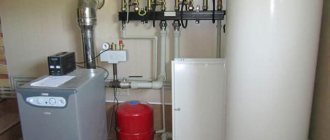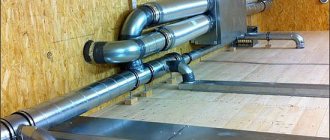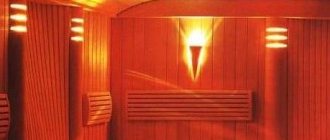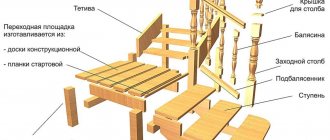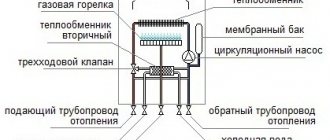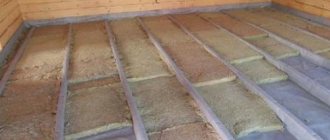When disadvantages turn into advantages
Conventional steam heating is used in industrial enterprises and other similar facilities.
However, there is another option when it can show its best properties with sufficient efficiency. We are talking about heating in a country house. When it is not intended for permanent residence in cold weather, it becomes important to quickly warm up the premises upon arrival, as well as the speed of conservation of the system upon departure. For such cases, steam heating in the country should be considered one of the most suitable options. Among its advantages are precisely those factors that play a leading role in the situation under consideration.
Another advantage is the possibility of installing steam heating in addition to the existing stove heating. If your dacha has a regular stove, then by placing a heat exchanger in its firebox, you will get a steam generator, and the steam can be supplied to radiators located in other rooms. Thus, without significant costs, you can improve the conditions of staying at the dacha in cold weather.
For all its advantages, steam heating is not the most optimal option for heating a private home. Moreover, the current sanitary and hygienic rules provide for its use for non-residential and commercial enterprises. However, some of its advantages, primarily the relatively low costs of creation, contribute to its use in individual residential buildings.
Despite the comfort of a city apartment, almost every person dreams of living in a private home or at least owning real estate outside the city. At the same time, the property must be comfortable and well-equipped. To do this, water must be supplied to the country house and a sewerage system must be installed. In addition, the house should have an effective and easy-to-use heating system. It should be noted that the fastest and most affordable option is to create steam heating.
Scheme of operation of a steam heating system.
There are two types of steam heating in a private house:
- Single-circuit steam heating - calculated only for heating the building.
- Double-circuit steam heating not only heats the house, but also supplies residents with warm water.
The steam heating system in a private home has not lost its relevance over many years of use.
The reason for this is very simple: the reliability and functionality of the system has been tested by many users over several decades.
You can carry out steam heating with your own hands in a short period of time. After all, this system is clear and simple, and does not require special knowledge.
Radiator batteries and steam pipelines are characterized by increased heating temperatures. In some cases, temperatures can exceed 1000 degrees Celsius. The piping system includes vertical and horizontal pipes. Usually two types of wiring are used - upper and lower. The choice is made depending on the characteristics of the room.
Project comes first
When deciding to create steam heating, one must be aware that in this case the coolant will be steam with all the associated features. Among them, it is necessary to note the most important one - the increased temperature of the radiators, which results in a significant likelihood of getting a burn if touched. But leaving aside all sorts of pros and cons, let’s just see how you can become the owner of steam heating by installing it yourself in a private home.
Heating project for a two-story cottage
About the boiler
As it should be in any serious business, you need to start with a project. The first step is to determine the power of the thermal boiler. It depends on the area of the house. So, with an area not exceeding two hundred square meters, a power of up to twenty-five kilowatts will be sufficient, with a house area of up to three hundred square meters. m. will already require a power of up to thirty kilowatts. Based on such data, a steam boiler is selected. In addition to its power, the following factors must be taken into account:
- type of fuel used for work (coal, firewood, peat, gas, diesel fuel, etc.);
- possibility of obtaining hot water for household needs.
Choosing a boiler will be one of the main tasks, the successful solution of which will determine the answer to the question of how to properly make steam heating.
Do-it-yourself heating of a private house |
|
About the heating scheme
It must also be determined before starting work. The steam heating scheme depends on:
- size of heated area;
- the number and location of heating batteries, filters, valves and control valves, control devices, etc., everything that is necessary for the normal functioning of such a system;
- possibilities for equipment placement;
- where and how the heating boiler will be located.
The question of choosing a specific heating option is quite complex, perhaps a video would be useful in this situation
Steam heating pipes
As already mentioned, with steam heating the entire system is characterized by an increased temperature, so the use of synthetic pipes is impossible; they are not designed to operate at such temperatures. So, when determining how to make steam heating, you need to pay special attention to the choice of pipes; although it is small, it is there.
- Steel pipes. To use them you need welding equipment. The advantage of pipes is their high mechanical strength and the ability to withstand significant impacts, but they are susceptible to corrosion.
- Copper. Soldering is used for their installation and they are expensive.
- Galvanized and stainless steel pipes. They combine the advantages of the previous ones, joining is carried out using threads, are resistant to corrosion, but have an increased price.
|
|
To facilitate further work, it is necessary to determine where to place radiators (or other devices, if you prefer them), the length of the pipes, the location of adapters, branches, manifold distributors, etc. In short, a steam heating connection diagram must be drawn out on paper indicating all the necessary details (equipment, pipe length, etc.).
About the price of such a system
Once the project is completed and you are clear on what equipment to use, you can determine your costs. Without reference to specific conditions, equipment, pipes, volumes of installation work, it is impossible to say specifically how much it costs to install steam heating.
The only thing that can be noted is the testimony of experts that such a heating system is cheaper than a conventional one, although it is not approved for use in residential premises.
Assessing advantages and disadvantages
What are the benefits of a steam heating system? It is relatively easy to make even on the basis of a conventional wood stove. This is especially true in areas where there is no centralized gas supply, but firewood or other solid fuel is quite accessible.
Steam is significantly ahead of water as a coolant. Its heating rate is three times higher. In addition, a steam heating system is unlikely to fail during winter cold due to lack of heating.
If the firebox burns out, water from the system will collect in the storage tank or heat exchanger, and the pipes and radiators will remain empty. With water heating, freezing of the coolant, which fills the entire circuit, is known to lead to pipe rupture.
Finally, the dimensions of steam heating radiators should be significantly smaller than for water systems, since the amount of thermal energy obtained as a result increases several times. This will slightly reduce the cost of installing a heating system at home.
Decorative grilles for steam heating radiators are not only an element of interior design, but also a means of protection against burns
This concludes the list of advantages of the steam system, and we can move on to its disadvantages, which are quite significant:
- high risk of burns;
- increased noise level during operation;
- difficulties in adjusting the operation of the system;
- the need to purchase expensive pipes, etc.
Safety standards do not recommend steam heating for residential premises, as it poses a high risk to the health and life of people living in the house.
Thus, the operating temperature of the radiators will be very high, and if you touch them you can get a serious burn. Therefore, all radiators will have to be covered with reliable decorative grilles.
Ordinary PVC pipes are not suitable for such a system, since they must withstand high pressure and temperatures of more than 100 degrees. The same requirements apply to other elements of the system. Steam heating pipes must be copper or galvanized steel.
Copper pipes are an ideal, but not at all cheap, communication option for steam heating systems. To connect these pipes you will need a welding machine
In any case, this moment cannot be called budgetary.
Security issues must be given the utmost attention. All installation work, for example, welding copper pipes, will require the highest quality performance
If the connection ruptures and a stream of steam escapes through the hole, one of the occupants of the house risks serious burns.
Stainless steel pipes are able to withstand the loads typical of steam heating systems, such as high temperature and increased pressure in the system
Another disadvantage of steam heating is the increased noise level. To fix this problem, you must install the radiators correctly. They are suspended on special anti-noise brackets. It is best to place the boiler or stove in a separate room. In addition, copper pipes can be placed in the thickness of the walls, which will also reduce the noise level.
Finally, it is a little difficult to regulate the heating temperature in rooms with steam heating. You cannot install a thermostat and simply reduce the amount of steam. You will have to reduce the amount of fuel, which is not always easy, or ventilate the premises. Before starting work on installing a steam heating system, all these points should be taken into account.
Installation
The steam system has been in use for a long time, but has gradually undergone modernization. More precisely, the original components remained of the same principle, but were made more modernly.
For example, you can use cast iron, polypropylene, aluminum, metal-plastic batteries. Radiators are cast from cast iron, steel, aluminum, and bimetallic models are made, which are gaining popularity.
Stage 1. Drafting
Any connection must be made according to the approved diagram.
Designing a heating line requires mandatory calculations for individual parts that make up a single system.
Typically, a standard diagram contains a general description of the heating installation plan for the entire house with the corresponding calculations. Next is the graphic part of the project.
The location of the house must be taken into account: the location of the premises relative to the cardinal directions, the local landscape, and geographical location are described. This is necessary to calculate the optimal parameters for winter.
In the section on equipment, the temperature of the liquid at the inlet and outlet of the boiler and the hydraulic resistance are indicated. Additionally, they describe the dimensions of the pipe cross-section, the material from which the pipeline is made, and the number of radiator sections.
The expansion tank, thermostat, valves, etc. will be selected according to this.
Ready diagramSpecific data includes numerical coefficients, parameters for calculating thermal power or heat consumption of the house.
Now we begin to draw up an estimate. It is important to carry out all calculations in advance. Inside the document, calculations are made of the total costs of basic materials, fasteners, sealants, tools, etc. The percentage of stock, the average amount of preliminary costs for raw materials, is calculated.
Boiler room equipment
The main boiler can run on gas or electricity; you need to calculate the power of the unit.
The standard model contains a drum tank for cold water, a collector at the bottom of the device, and pipes with a separator that transport steam. If the heating is solid fuel, there must be a firebox, and when using a liquid form, there must be a filler neck.
Boiler appearance
Denser hot water is pushed upward naturally. Inside the separator, steam is separated from the steam, which enters the pipeline and is very hot from the combustion chamber. This effect increases the intrapipe pressure, forcing the gas to move inside the system and circulate regularly.
When choosing equipment, you need to rely on safety characteristics to prevent steam leaks.
Pipeline connection diagram
The simplest connection is a one-pipe circuit. It involves connecting one line of pipes around the perimeter of the building.
The exit is from the boiler supply pipe, the entrance is through the return pipe.
Near each radiator there are outlets to the pipeline, connected through shut-off valves.
This option is characterized by low costs of money, effort, and time - you don’t need a lot of materials, the work is done quickly, without complications. The consumption of small parts increases, since the single-line format involves the removal of bends.
The most effective way to connect a heating system is a two-pipe circuit. The heating scheme involves laying two heating lines.
Connection: the supply pipe enters and exits the battery, without additional jumpers.
The second name for this style of construction is parallel connection, since the elements are joined not in order, but parallel to each other.
The connection requires a lot of reinforcing bars, which increases costs.
Connection options
The elements heat up more evenly, the pipe surface heats up equally, no matter where the coolant is located. This method of steam heating is suitable for two-story houses and cottages.
As a result, each battery works independently, since it has a dedicated circuit. This also makes it easy to replace it at any time, without fear of damaging the structure.
It is recommended to install a circular pump to increase the overall heating effect.
What materials to choose
Pipes are presented in a wide range on the construction market.
Metal products are less susceptible to corrosion and are much less likely to rust inside. This effect is achieved by galvanizing them. Therefore, you should be more careful about the pipes: do not allow small pebbles to get inside the system, try to avoid mechanical cleaning so as not to damage the zinc layer.
Copper pipelines are more expensive, but they are the most durable, very reliable, however, they are difficult to install yourself.
Inside cold rooms, the degree of heat loss increases, the coating of the radiators quickly peels off, and they have to be repainted often.
The polypropylene type is affordable in terms of cost, easy to install and maintain.
The low degree of expansion causes significantly less damage to the finishing layer. The batteries do not need to be repainted many times. They don't burst when frozen.
But it will require a special connection. Fittings are installed on the turns, which creates additional seams.
It is problematic to repair the connected line locally; you will have to disassemble it at the attachment points with two fittings and completely replace this section.
Products made from cross-linked polyethylene can withstand high pressure, loads of about 90 degrees, and will last more than 50 years.
Assembly is simple, using press fittings. The internal cavity is so smooth that it prevents the formation of potassium deposits.
Metal-plastic products are popular because they are not expensive and are easy to install. They combine the advantages of both types of materials.
Stage 2. Direct installation
First, the head boiler is installed and its piping is performed. If the aggregate power is less than 60 kW, it can be placed in the kitchen, where there is free access to adjust the operation of the steam system.
Powerful variations are installed in the boiler room, which is located either in a separate room on the same level as the house, or in the basement.
If the heating source runs on combustion fuel, it will be necessary to provide a supply of fresh air and equip a chimney to remove combustion products.
Natural circulation involves installing the equipment so that the return pipe is located lower than the radiators on the ground floor of a private building.
A Mayevsky tap and a pressure sensor are installed on the supply line. The pipeline is laid according to the approved scheme.
The general connection procedure is clear. Radiators are placed under the windows. If there is a recess under the window sill, you cannot place the battery inside; it is better to cover it with thermal insulation. The number of sections is pre-calculated in accordance with the local climate, home arrangement and other nuances.
Markings are made on the wall, brackets are driven in, radiators are hung. Connect inputs and outputs to each line.
Tow or fum tape is wound around the joints with the thread. When welding is done, a metal wire is tightly wrapped around the seams, which will become part of the convex seam.
If fastening is carried out with nuts, then they are tightened tightly with a wrench or adjustable wrench, and the top is treated with silicone sealant.
The heating return line is equipped with an expansion tank to regulate internal pressure and a circulation pump.
Installation is explained in more detail in the following video:
What is steam heating?
Steam heating is a system that uses steam as a coolant. How steam heating works in a private house: water boils in a boiler (heat source) and steam is transferred through pipes to heating devices. When moving through pipelines, the coolant condenses and settles on the inner walls of the radiators, giving off almost all of the heat. The batteries heat up themselves and transfer heat to the room.
The condensate formed after the carrier settles returns to the heating source by gravity - if the system is closed or using a pump (in open structures).
Advantages and disadvantages of steam heating
Experts note the following advantages of steam heating:
- Increased productivity. In a private house, you won’t need to install a lot of radiators, and in some cases, pipes without radiators are enough.
- Low inertia. To feel the warmth in the room, 10-12 minutes from the start of heating the boiler are enough.
- Reduced heat loss makes the steam heating system as economical as possible; you don’t have to buy expensive equipment to equip the structure.
- Easy to install. The process of forming a network in a private home is not complicated and can be done with your own hands.
Minuses:
- high temperature of operating devices;
- lack of smooth regulation of room heating temperature;
- restrictions on the choice of material (pipes must be metal only).
It may also be difficult to connect taps to a running system when the elements are heated to 100 C; any touch causes a burn.
To control the heating structure in a private home, experts recommend installing an automatic system that, when the air in the rooms cools down to a certain level, will put the entire system into operation. It is also possible to install automation not on one main branch, but on each (parallel) one, in order to separately start heating a particular room - this is more convenient and economical.
It is precisely because of the threat of accidents that the system is not used in multi-apartment buildings, and in private houses it is installed only under the personal responsibility of the owner.
Characteristics and diagram of the device
The principle of operation is based on the release of heat as a result of the conversion of the coolant, precipitation into condensate, which is removed from the devices and again enters the boiler.
- In a closed system, where the condensate returns to the boiler by gravity under the influence of the difference in temperature and pressure in the heating units. For boilers in such systems, the most important indicator is the temperature and pressure height.
- In an open-loop system, condensate accumulates in a tank, from where it is pumped by a pump or pump to the heating station. When setting up such a scheme, it is necessary to ensure unhindered drainage of condensate into a special tank from the lower heating device.
Based on steam pressure, an open-loop steam heating circuit can be of 4 types:
- subatmospheric;
- vacuum-steam;
- low blood pressure;
- high blood pressure.
The maximum permissible threshold for heating steam is up to 130 C, but for a vacuum-steam, sub-atmospheric pressure system, the ambient temperature is much lower than +100 C. Such steam heating schemes make it possible to change the magnitude of the vacuum (vacuum) and adjust a comfortable temperature regime. The advantage is the absence of complex units when arranging heating. There are enough steam lines (pipes for transporting the medium) and condensate lines (for transferring condensate to tanks) to start a steam boiler and get an efficient home heating system.
Types of wiring
Distribution of heating systems
Steam type heating can be distributed throughout the room in several ways. Each of them has its own characteristics.
- Upper. Involves placing a steam outlet under the ceiling. Pipes go down to the radiators. Usually, for efficient heating, they try to use this type of system, since here steam moves along one medium, and condensate through another.
- Bottom. The condenser and steam move through the same pipes. As a result, water hammer and depressurization of the system may occur. The pipes are located at floor level.
- Intermediate. The steam outlet is installed at the window sill level, so the hot pipes are within the access area. This increases the risk of getting burned. The operating principle of this design is similar to the upper wiring option.
Regardless of the method of diluting coolants, all pipes transporting steam must be laid at a slope of 1-2 degrees.
Types of steam heating systems
According to the method of installation, steam heating is distinguished into two types: with a closed and open system. In a closed system, condensate flows into a special receiving pipe, which is connected to the corresponding inlet of the cat. It is laid with a slight slope, so that the condensate moves through the system by gravity.
Schemes of open and closed steam heating systems
In an open system, condensate is collected in a special container. When it is filled, it is fed into the boiler using a pump. In addition to different system designs, different steam boilers are also used - not all of them can operate in closed systems.
In general, there are steam heating systems with pressure close to atmospheric or even lower. Such systems are called vacuum-steam systems. What is so attractive about this setup? Because at low pressure the boiling point of water decreases and the system has a more acceptable temperature. But the difficulty in ensuring tightness - air is constantly sucked in through the connections - has led to the fact that these schemes are practically never encountered.
Steam heating with low pressure is more common. Existing steam boilers for domestic use can create a pressure of no higher than 6 atm (at a pressure of more than 7 atm, use of the equipment requires permission).
Wiring types
According to the type of wiring, steam heating is:
- With top wiring (the steam line is located under the ceiling, pipes go down from it to the radiators, and a condensate line is laid below). This scheme is the easiest to implement, since hot steam moves through one pipe, cooled condensate through another, the system is stable.
- With bottom wiring. The steam line is located at floor level. This scheme is not the best choice, since hot steam moves up through one pipe and condensate moves down, which often leads to water hammer and depressurization of the system.
- With intermediate wiring. The steam line is laid just above the radiators - approximately at the level of the window sills. The system has all the advantages of overhead wiring, except that hot pipes are within reach and there is a high risk of burns.
When laying, the steam pipeline is made with a slight slope (1-2%) in the direction of steam movement, and the condensate pipeline - in the direction of condensate movement.
Boiler selection
Steam boilers can operate on all types of fuel - gas, liquid and solid fuel. In addition to choosing fuel, it is necessary to correctly select the power of the steam boiler. It is determined depending on the area that needs to be heated:
- up to 200 m2 - 25 kW;
- from 200 m2 to 300 m2 - 30 kW;
- from 300 m2 to 600 m2 - 35-60 kW.
In general, the calculation method is standard - 1 kW of power is taken per 10 square meters. This rule is valid for houses with a ceiling height of 2.5-2.7 m. Next comes the choice of a specific model. When purchasing, check for a quality certificate - the equipment is dangerous and must be tested.
Which pipes to use
Only metals can normally withstand temperatures during steam heating. The cheapest option is steel. But welding is required to connect them. It is also possible to use threaded connections. This option is budget-friendly, but short-lived: steel quickly corrodes in a humid environment.
At least copper pipes don't corrode
Galvanized and stainless steel pipes are more durable, but their price is not at all modest. But the connection is threaded. Another option is copper pipes. They can only be soldered, they are expensive, but do not rust. Due to their higher thermal conductivity, they transfer heat even more efficiently. So this heating system will be super efficient, but also very hot.
Basic elements of a steam system
The steam system includes several essential elements. Let's look at each of them in more detail.
Steam boiler - the heart of the system
The main function of the heating device is to convert water into steam, which subsequently enters the pipeline. The main structural elements of the device are the collectors, drum and pipelines.
In addition, there is a container with water, which is called the water space. A steam space is formed above it during operation of the device. They are separated by the so-called evaporation mirror.
The figure schematically shows one of the types of domestic steam boiler
Additional equipment designed for steam separation can be installed inside the steam space. The operation of the boiler is based on the principle of heat exchange between flue gases, water and steam.
There are two types of steam heating devices: fire-tube and water-tube. In the first case, heated gases move inside a pipeline laid inside a container of water.
They give off heat to the liquid, which reaches a boiling point. Water tube varieties work slightly differently. Here, water moves through pipes laid inside the chamber with flue gases. It heats up and boils.
Water and steam inside the boiler can move forcefully or naturally. In the first case, a pump is included in the design, in the second, the difference in densities of water and steam is used.
All types of steam boilers use approximately the same principle of converting water into steam:
- The prepared liquid is supplied to a reservoir located at the top of the boiler.
- From here the water flows through pipes into the collector.
- The liquid from the collector rises into the upper drum, passing through the heating zone.
- Inside the pipe with water, as a result of heating, steam is formed, which rises.
- Steam, if necessary, is passed through a separator, where it is separated from water. After which it enters the steam line.
A steam boiler can use a wide variety of fuels. Depending on this, certain changes are made to its design. They touch the combustion chamber. For solid fuel, a grate is installed on which coal, firewood, etc. are placed.
Special burners are used for liquid and gaseous fuels. There are also practical combination options.
Among home craftsmen, the installation of steam heating using a stove is especially popular. The photo shows one of the possible options for remodeling the stove
Depending on the heated area, the boiler power is selected.
This can be done based on average values:
- 25 kW for buildings up to 200 sq. m;
- 30 kW for houses with an area of 200 to 300 sq. m;
- 35-60 kW for buildings from 300 to 600 sq. m.
If more accurate data is needed, use the standard calculation method, where for every 10 sq. meters accounts for 1 kW of equipment power. We must not forget that the formula is used for houses with a ceiling height of 2.7 m or less.
For taller buildings, more power must be taken. When choosing a boiler, special attention should be paid to its certification. Any steam heating system is potentially dangerous, so testing the equipment is mandatory.
Heating pipes and radiators
The coolant temperature in steam systems ranges from 100 to 130 °C, which is much higher than in liquid systems, where it ranges from 70 to 90 °C. Therefore, it is strongly not recommended to use similar equipment for arranging systems.
First of all, this applies to metal-plastic and polypropylene pipes. The maximum operating temperatures for these materials vary between 90-100 °C, so their use is strictly prohibited.
An ideal option for installing a steam heating system is copper pipes. They are not subject to corrosion, can withstand high temperatures, but are very expensive
For main pipelines of steam systems, three types of pipes are usually used. The most inexpensive option is steel. They can easily withstand temperatures of 130 °C, which is more than enough, and are quite durable.
However, the condensate formed inside the parts quickly destroys the pipes, since steel is susceptible to corrosion, and the aggressive environment formed by steam only enhances this disadvantage.
Another disadvantage of steel elements is the need for connection by welding, which takes a lot of effort and time. Galvanized steel pipes are much more resistant to corrosion. They also withstand high temperatures well.
The threaded method is usually used to connect them, which greatly simplifies the process. The main disadvantage of galvanized pipes is their high cost.
Copper pipes are considered the ideal option. The material can withstand high temperatures, is quite plastic and at the same time durable, and is not subject to corrosion. Soldering is used to connect copper parts.
Copper pipelines are very durable and strong, but their cost is very high. Thus, the most acceptable option in terms of quality and price is steel pipes with anti-corrosion coating or galvanized.
The best choice for steam heating is cast iron radiators. They will be able to withstand severe loads caused by the presence of hot steam inside the batteries.
Radiators for steam systems are selected based on strength. It is important that they withstand high temperatures and are resistant to corrosion. Based on this, massive cast iron batteries can be considered the best option, while steel panel batteries are the worst.
Given the high efficiency of the system, in some cases it is quite acceptable to use finned steel pipes.
Instrumentation unit
The steam heating system is characterized by an increased emergency hazard, so the presence of monitoring devices is mandatory. The pressure in the system is monitored and, if necessary, normalized. For these purposes, a gearbox is usually used.
The device is equipped with a valve through which excess steam is removed from the system. For powerful installations, not one, but several of these valves may be needed.
Steam heating in a private house
The complex design of steam boilers, as well as the excessive power of such units, limit their scope of application primarily to the industrial and municipal segment of the heat-generating equipment market.
Moreover, in these sectors, steam generating boilers simply have no competitors. However, some “steam” models can also be introduced into the heating scheme of a private home, increasing its productivity and efficiency.
The steam heating pipeline has a small diameter
Operating principle of a steam boiler
A steam heating boiler is a powerful and productive heat generator that is superior to its “water” counterpart in almost all characteristics.
At the same time, the key to such dominance is the very principle of operation of the unit, which is as follows:
- Water from the tank at the top flows into a collector at the base of the boiler.
- From the collector, water is supplied back to the tank, passing through a tubular heat exchanger built into the firebox.
- A gaseous fraction with a lower density is separated from the liquid superheated in the firebox - steam, “collected” by a receiver built into the upper tank.
- Boiling water mixes with the still cold medium in the tank, increases its temperature and “goes” down to the collector, and then to the heat exchanger.
Simply put: a conventional “portion” of water circulates between the tank and the collector until the energy of the firebox turns all the liquid into steam, which is supplied from the receiver to the boiler pressure pipe.
That is, only the heated coolant goes to the consumer, and the water that has not matured to the state of steam remains in the boiler, increasing the temperature of the condensate “returning” along the return line. As a result, the owner of such equipment can count on a number of beneficial qualities and characteristics.
Steam heating scheme for a private house
Advantages and disadvantages of steam generating equipment
The operation of steam boilers operating on the basis of the operating principle described above guarantees the owner of the heating system the following set of advantages:
- Rapid heating of the serviced space - the gaseous coolant moves through the wiring at high speed, transferring a huge “portion” of energy from the boiler to the batteries.
- Savings on pressure equipment - boiling water creates pressure in the steam space of the boiler, providing a sufficiently strong incentive for coolant circulation. The return of condensate to the water space of the unit is ensured by the force of gravity.
- Saving on fuel - a steam generator uses any type of fuel in its operation: from cheap firewood and gas to expensive electricity and fuel oil. At the same time, the operating scheme ensures the highest possible efficiency of the boiler due to the reuse of water that has not yet boiled.
Possible disadvantages of steam heat generating plants include the following facts:
- High steam pressure in a steam heating boiler, which reduces the overall safety level of the installation. That is, despite the reliability of the design, if handled carelessly, such a boiler can simply explode.
- High coolant temperature, due to which the heating system will have to be assembled using steel pipes capable of withstanding heat above 100 degrees Celsius.
Boiler for steam heating using gas fuel
In addition, it is also necessary to mention the need for frequent repairs of components of the steam generating unit, which are destroyed due to constant contact with hot media - coolant, flue gases, open fire.
Types of steam boilers
- The fire tube installation is an outdated model that involves heating water with the energy of the “exhaust” gases of the furnace moving through tubular air ducts, which are mounted directly into the water space of the boiler. Such units require too frequent repairs and cannot generate more than 360 kW of thermal power and 10 atmospheres of pressure in the wiring. But the main disadvantage of the fire tube option is the tendency to overheat, resulting in the explosion of the equipment, and poor controllability of the steam generation process.
- The water-tube installation is a completely modern model that involves heating the liquid circulating in the tubes of the heat exchanger with the energy of gases burned outside it. Simply put: a heat exchanger made of refractory metal is immersed in the “combustion chamber” of such a boiler, into the internal cavity of which water is poured, boiling under the influence of the heat of the firebox. Such a boiler will not explode due to careless handling. In addition, such a system is configured to maximize the use of energy from burned fuel, which allows water tube boilers to demonstrate the highest possible efficiency.
- The once-through unit is an industrial version of the water-tube model, used as a steam generator both in power plants and in public utilities. This option is distinguished from the previous model by the presence of pressure equipment that pumps water through a heat exchanger with a maximum surface area. Moreover, as the medium moves along the circuit, most of the liquid turns into steam, ready for consumption. Such installations will operate in both steam generating and hot water modes, providing any level of thermal power and any pressure in the distribution.
Steam heating of a private house - recommendations for arranging the system
Such a heat generating installation can only be used if the home meets the following requirements:
- The fire resistance of the main structural elements of the building is at least 75 minutes.
- The presence of window openings in each room.
- Availability of efficient supply and exhaust ventilation of at least one cycle.
- The height of the ceilings in the building is at least 220 centimeters.
- The presence of a boiler room or the ability to place the boiler at a distance of 100 centimeters from the walls and ceiling.
Copper piping is considered very reliable
If your home meets these requirements, then you can proceed to the heating system installation process, taking into account the following recommendations:
- The system wiring is assembled only from metal pipes - steel or copper.
- The optimal wiring diagram is two-pipe or, as an option, manifold. It is better to leave single-pipe wiring for the water heating circuit - it makes too much noise.
- The power of a steam heating boiler is selected according to the classical proportion - square meter = 0.12 kW or cubic meter = 0.041 kW.
- The optimal type of heating battery is a plate convector or bimetallic radiator. But it is better not to use panel batteries and cast iron radiators. The first ones will not withstand the steam pressure. The latter do not demonstrate very high energy efficiency.
- In a small area, a condenser will have to be installed into the return of the system - a steam “thickener”, equipped with a circulation pump. Since a “short” wiring circuit will not be able to provide natural condensation of the coolant. In this case, the energy released by the condenser can be used to indirectly heat the boiler of the hot water supply system.
- As a sealant for threaded joints, you will have to use a heat-resistant material, because the steam temperature reaches 250 degrees Celsius.
The installation diagram of the boiler, batteries and pipelines in this case is not different from the generally accepted version of the “piping” of a hot water boiler.
climanova.ru
Steam heating boiler in a private house
A steam boiler is an alternative type of heating for private houses and cottages. Water heating of buildings is incorrectly called “steam” - such confusion in names is associated with the principle of heating apartment buildings, where an external coolant under pressure is supplied from a thermal power plant to individual houses and transfers its heat to the internal carrier (water), which circulates in a closed system.
general characteristics
Steam heating in a private home is used much less frequently than other methods of heating rooms. It is economically justified to use a boiler in a country house or country house, when year-round living is not provided, and the main role in heating is played by the speed of heating the premises and the ease of preparation for conservation of the system.
The possibility of installing such equipment in addition to existing equipment, for example, a furnace, is another advantage of using steam as a coolant.
Operating principle
As a result of boiling water in the boiler unit (steam generator), steam is formed, which is supplied to the system of pipelines and radiators. During the condensation process, it gives off heat, providing rapid heating of the air in the room, and then in a liquid state it returns in a closed circle to the boiler. In a private house, this type of heating can be implemented in the form of a single- or double-circuit circuit (heating and hot water for domestic needs).
According to the wiring method, the system can be single-pipe (series connection of all radiators, the pipeline runs horizontally and vertically) or two-pipe (parallel connection of radiators). Return of condensate to the steam generator is possible by gravity (closed circuit) or forcibly using a circulation pump (open circuit).
The home steam heating scheme includes:
- boiler;
- boiler (for a double-circuit system);
- radiators;
- pump;
- expansion tank;
- shut-off and safety valves.
Description of steam heating boiler
The key element of space heating is the steam generator, the design of which includes:
- furnace (fuel combustion chamber);
- evaporator pipes;
- economizer (heat exchanger for heating water using exhaust gases);
- drum (separator for separating the steam-water mixture).
Boiler units can operate on different types of fuel, but it is better for private homes to use a steam domestic boiler with the ability to switch from one type to another (combined).
The efficiency and safety of such space heating depends on a competent approach to choosing a steam generator. The power of the boiler unit must be commensurate with its tasks. For example, to create an optimal microclimate in a house with an area of 60-200 m2, you need to buy a boiler with a capacity of 25 kW. For domestic purposes, it is effective to use water pipe units, which are more modern and reliable.
Self-installation of equipment
The work is carried out in stages, in a certain order:
1. Drawing up a project taking into account all the details and technical solutions (length and number of pipes, type of steam generator and location of its installation, location of radiators, expansion tank and shut-off valves). This document must be approved by state control authorities.
2. Installation of the boiler (done below the level of the radiators to ensure upward movement of steam).
3. Pipe layout and installation of radiators. When laying, a slope of about 5 mm should be set for each meter. Radiators are installed using a threaded connection or welding. In reviews of the steam heating system, experienced users recommend installing taps to eliminate problems when air locks occur and facilitate subsequent operation.
4. The expansion tank is installed 3 meters above the level of the steam generator.
5. The boiler unit must be connected only with metal pipes of the same diameter as the boiler outlets (adapters cannot be used). The heating circuit is closed in the unit, and it is advisable to install a filter and a circulation pump. It is necessary to install a drain unit at the lowest point of the system so that the pipeline can be easily emptied for repair work or preservation of the structure. The necessary sensors must be installed on the boiler unit to monitor the process and ensure safety.
6. Testing of a steam heating system is best carried out in the presence of specialists who can not only perform all procedures in accordance with current norms and standards, but also eliminate any shortcomings and inaccuracies in the installation scheme with their own hands.
Steam heating cost
The price of the heating system will depend on the price of the equipment used, the length of the pipelines, installation and commissioning work.
Estimated cost of services:
| Type of work | Unit change | Cost, rubles |
| Installation and piping of boiler equipment | – | 7 000 – 9 500 |
| Radiator installation | PC | 2 500 – 4 200 |
| Installation of mains and risers | m | 85 – 150 |
| Commissioning | – | 9 000 – 16 000 |
According to reviews, heating with a steam boiler is much cheaper than other types due to the ability of the boiler to operate on any available type of fuel and the low price of instruments and materials.
termogurus.ru
Wood burning stove for steam heating
To organize steam heating in a private country house, an ordinary Russian wood-burning stove can be used. This heating unit consists of the following blocks:
- firebox for loading firewood and other fuel.
- ash pan, used to accumulate combustion products.
- The coil allows heating of the coolant.
The operating principle of a wood-burning stove is quite simple. During fuel combustion, a huge amount of thermal energy is released, which is used to heat the coolant in the coil. Under the influence of high temperatures, hot water turns into steam, enters the radiators, gives off some of the heat and turns into condensate. Next, the liquid is returned back to the boiler, where it is reheated.
Advice! For efficient operation of utilities, it is necessary to flush the heating system in a private home.
The development of a drawing of the heating system, as well as its installation, should be carried out by professionals. In this regard, many country property owners prefer to order the services of a master than to carry out such work themselves. If there is such a need, leave a request on the website or call +7 (926) 966-78-68
| Work performed | Price |
| Installation of risers made of polypropylene, polyethylene, metal plastic | from 800 rub./ linear meter |
| Installation of a boiler safety group | from 1100 rub. |
| Installation of a circulation pump | from 1400 rub. |
| Installation of expansion tank | from 1400 rub. |
| Installation of the main mixture collector | from 1500 rub. |
| Installation of thermohydraulic distributor | from 1700 rub. |
| Installation of a radiator, floor convector, etc. | from 1800 rub. |
| Installation of the pump group | from 2000 rub. |
| Installation of a collector with underfloor heating flow meters | from 2500 rub. |
| Installation of an in-floor convector | from 2500 rub. |
| Routing heating pipes to radiators | from 2500 rub. |
| Electric boiler installation | from 3000 rub. |
| Pressure testing of the heating system | from 4000 rub. |
| Installation of an indirect heating boiler | from 12,000 rub. |
| Electric boiler installation | from 12500 rub. |
| Installation of a wall-mounted gas boiler | from 14,000 rub. |
| Installation of a floor-standing gas boiler | from 16,000 rub. |
| Installation of a gas wall-mounted double-circuit boiler | from 16500 rub. |
